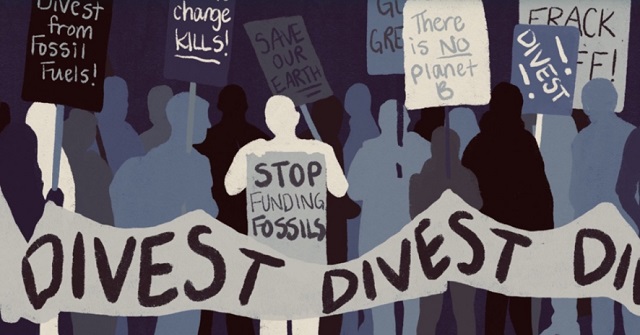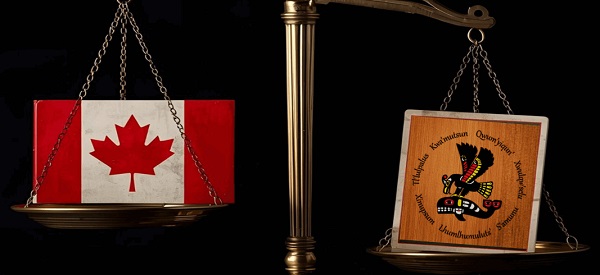C2C Journal
Indecent Proposals: How Activist Investors Hijacked Responsible Corporate Governance

From the C2C Journal
By Gina Pappano of InvestNow
It’s a central tenet of the free-market economy: a corporation’s job is to maximize investment returns to its shareholders. Bluntly, to make money. And “shareholder proposals” have been a powerful tool enabling investors to pressure a company’s board to take a particular action to increase its value. In recent years, however, activist groups have been weaponizing shareholder proposals to pressure companies into pursuing ideological goals, especially environmental and “progressive” social-welfare causes. In the case of the oil and natural gas industry, they’ve even pushed for companies to take actions that would drive them out of business. Veteran markets expert Gina Pappano examines this damaging phenomenon – and the new movement pushing back.
Business
Climate Climbdown: Sacrificing the Canadian Economy for Net-Zero Goals Others Are Abandoning

By Gwyn Morgan
Canada has spent the past decade pursuing climate policies that promised environmental transformation but delivered economic decline. Ottawa’s fixation on net-zero targets – first under Justin Trudeau and now under Prime Minister Mark Carney – has meant staggering public expenditures, resource project cancellations and rising energy costs, all while failing to
reduce the country’s dependence on fossil fuels. Now, as key international actors reassess the net-zero doctrine, Canada stands increasingly alone in imposing heavy burdens for negligible gains.
The Trudeau government launched its agenda in 2015 by signing the Paris Climate Agreement aimed at limiting the forecast increase in global average temperature to 1.5°C by the end of the century. It followed the next year with the Pan-Canadian Framework on Clean Growth and Climate Change that imposed more than 50 measures on the economy, key among them a
carbon “pricing” regime – Liberal-speak for taxes on every Canadian citizen and industry. Then came the 2030 Emissions Reduction Plan, committing Canada to cut greenhouse gas emissions to 40 percent below 2005 levels by 2030, and to achieve net-zero by 2050. And then the “On-Farm Climate Action Fund,” the “Green and Inclusive Community Buildings Program” and the “Green Municipal Fund.”
It’s a staggering list of nation-impoverishing subsidies, taxes and restrictions, made worse by regulatory measures that hammered the energy industry. The Trudeau government cancelled the fully-permitted Northern Gateway pipeline, killing more than $1 billion in private investment and stranding hundreds of billions of dollars’ worth of crude oil in the ground. The
Energy East project collapsed after Ottawa declined to challenge Quebec’s political obstruction, cutting off a route that could have supplied Atlantic refineries and European markets. Natural gas developers fared no better: 11 of 12 proposed liquefied natural gas export terminals were abandoned amid federal regulatory delays and policy uncertainty. Only a single LNG project in Kitimat, B.C., survived.
None of this has had the desired effect. Between Trudeau’s election in 2015 and 2023, fossil fuels’ share of Canada’s energy supply actually increased from 75 to 77 percent. As for saving the world, or even making some contribution towards doing so, Canada contributes just 1.5 percent of global GHG emissions. If our emissions went to zero tomorrow, the emissions
growth from China and India would make that up in just a few weeks.
And this green fixation has been massively expensive. Two newly released studies by the Fraser Institute found that Ottawa and the four biggest provinces have either spent or foregone a mind-numbing $158 billion to create just 68,000 “clean” jobs – an eye-watering cost of over $2.3 million per job “created”. At that, the green economy’s share of GDP crept up only 0.3
percentage points.
The rest of the world is waking up to this folly. A decade after the Paris Agreement, over 81 percent of the world’s energy still comes from fossil fuels. Environmental statistician and author Bjorn Lomborg points out that achieving global net-zero by 2050 would require removing the equivalent of the combined emissions of China and the United States in each of the next five
years. “This puts us in the realm of science fiction,” he wrote recently.
In July, the U.S. Department of Energy released a major assessment assembled by a team of highly credible climate scientists which asserted that “CO 2 -induced warming appears to be less damaging economically than commonly believed,” and that aggressive mitigation policies might be “more detrimental than beneficial.” The report found no evidence of rising frequency or severity of hurricanes, floods, droughts or tornadoes in U.S. historical data, while noting that U.S. emissions reductions would have “undetectably small impacts” on global temperatures in any case.
U.S. Energy Secretary Chris Wright welcomed the findings, noting that improving living standards depends on reliable, affordable energy. The same day, the Environmental Protection Agency proposed rescinding the 2009 “endangerment finding” that had designated CO₂ and other GHGs as “pollutants.” It had led to sweeping restrictions on oil and gas development and fuelled policies that the current administration estimates cost the U.S. economy at least US$1 trillion in lost growth.
Even long-time climate alarmists are backtracking. Ted Nordhaus, a prominent American critic, recently acknowledged that the dire global warming scenarios used by the Intergovernmental Panel on Climate Change rely on implausible combinations of rapid population growth, strong economic expansion and stagnant technology. Economic growth typically reduces population increases and accelerates technological improvement, he pointed out, meaning emissions trends will likely be lower than predicted. Even Bill Gates has tempered his outlook, writing that climate change will not be “cataclysmic,” and that although it will hurt the poor, “it will not be the only or even the biggest threat to their lives and welfare.” Poverty and disease pose far greater threats and resources, he wrote, should be focused where they can do the most good now.
Yet Ottawa remains unmoved. Prime Minister Carney’s latest budget raises industrial carbon taxes to as much as $170 per tonne by 2030, increasing the competitive disadvantage of Canadian industries in a time of weak productivity and declining investment. These taxes will not measurably alter global emissions, but they will deepen Canada’s economic malaise and
push production – and emissions – toward jurisdictions with more lax standards. As others retreat from net-zero delusions, Canada moves further offside global energy policy trends – extending our country’s sad decline.
The original, full-length version of this article was recently published in C2C Journal.
Gwyn Morgan is a retired business leader who has been a director of five global corporations.
Business
Judges are Remaking Constitutional Law, Not Applying it – and Canadians’ Property Rights are Part of the Collateral Damage

By Peter Best
The worst thing that can happen to a property owner isn’t a flood or a leaky foundation. It’s learning that you don’t own your property – that an Aboriginal band does. This summer’s Cowichan Tribes v. Canada decision presented property owners in Richmond B.C. with exactly that horrible reality, awarding Aboriginal
title to numerous properties, private and governmental, situated within a large portion of Richmond’s Fraser River riverfront area, to Vancouver Island’s
Cowichan Tribes. For more than 150 years, these properties had been owned privately or by the government. The Cowichan Tribes had never permanently lived
there.
But B.C. Supreme Court Justice Barbara Young ruled that because the lands had never been formally surrendered by the Cowichans to the Crown by treaty, (there
were no land-surrender treaties for most of B.C.), the first Crown grants to the first settlers were in effect null and void and thus all subsequent transfers down
the chain of title to the present owners were defective and invalid.
The court ordered negotiations to “reconcile” Cowichan Aboriginal title with the interests of the current owners and governments. The estimated value of the
property and government infrastructure at stake is $100 billion.
This ruling, together with previous Supreme Court of Canada rulings in favour of the concept of Aboriginal title, vapourizes more than 150 years of legitimate
ownership and more broadly, threatens every land title in most of the rest of B.C. and in any other area in Canada not subject to a clear Aboriginal land surrender
treaty.
Behind this decision lies a revolution – one being waged not in the streets but in the courts.
In recent years Canadian judges, inspired and led by the Supreme Court of Canada, have become increasingly activist in favour of Aboriginal rights, in effect
unilaterally amending our constitutional order, without public or legislative input, to invent the “consult and accommodate” obligation, decree Aboriginal title and grant Canadian Aboriginal rights to American Indians. No consideration of the separation of powers doctrine or the national interest has ever been evidenced by
the Court in this regard.
Following the Supreme Court’s lead, Canadian judges have increasingly embraced the rhetoric of Aboriginal activism over restrained, neutral language, thus
sacrificing their need to appear to be impartial at all times.
In the Cowichan case the judge refused to use the constitutional and statutory term “Indian,” calling it harmful, thereby substituting her discretion for that of our
legislatures. She thanked Aboriginal witnesses with the word “Huychq’u”, which she omitted to translate for the benefit of others reading her decision. She didn’t
thank any Crown witnesses.
What seems like courtesy in in fact part of a larger pattern: judges in Aboriginal rights cases appearing to adopt the idiom, symbolism and worldview of the
Aboriginal litigant. From eagle staffs in the courtroom, to required participation in sweat lodge ceremonies, as in the Supreme Court-approved Restoule decision,
Canada’s justice system has drifted from impartial adjudication toward the appearance of ritualized, Aboriginal-cause solidarity.
The pivot began with the Supreme Court’s 1997 Delgamuukw v. British Columbia decision, which first accepted Aboriginal “oral tradition” hearsay evidence. Chief
Justice Lamer candidly asked in effect, “How can Aboriginals otherwise prove their case?” And with that question centuries of evidentiary safeguards intended
to ensure reliability vanished.
In Cowichan Justice Young acknowledged that oral tradition hearsay can be “subjective” and is often “not focused on establishing objective truth”, yet she
based much of her ruling on precisely such “evidence”.
The result: inherently unreliable hearsay elevated to gospel, speculation hardened into Aboriginal title, catastrophe caused to Richmond private and government property owners, the entire land titles systems of Canadian non-treaty areas undermined, and Crown sovereignty, the fount and source of all real property rights generally, further undermined.
Peter Best is a retired lawyer living in Sudbury, Ontario.
The original, full-length version of this article was recently published in C2C Journal.
-

 Daily Caller1 day ago
Daily Caller1 day ago‘Holy Sh*t!’: Podcaster Aghast As Charlie Kirk’s Security Leader Reads Texts He Allegedly Sent University Police
-

 Alberta2 days ago
Alberta2 days agoAlberta Offers Enormous Advantages for AI Data Centres
-

 Great Reset1 day ago
Great Reset1 day agoCanadian government forcing doctors to promote euthanasia to patients: report
-

 Carbon Tax1 day ago
Carbon Tax1 day agoCarney fails to undo Trudeau’s devastating energy policies
-

 Alberta2 days ago
Alberta2 days agoNational Crisis Approaching Due To The Carney Government’s Centrally Planned Green Economy
-

 Alberta2 days ago
Alberta2 days agoCalgary mayor should retain ‘blanket rezoning’ for sake of Calgarian families
-

 Alberta1 day ago
Alberta1 day agoSylvan Lake football coach fired for opposing transgender ideology elected to town council
-

 Health1 day ago
Health1 day agoNEW STUDY: Infant Vaccine “Intensity” Strongly Predicts Autism Rates Worldwide
 Popular delusions: Climate activists push for an end to the oil and natural gas industry even as an energy-hungry world set records last year for energy consumption and oil production; the world will need crude oil and natural gas for decades to come and Canada could be a preferred supplier. (Sources: (photo)
Popular delusions: Climate activists push for an end to the oil and natural gas industry even as an energy-hungry world set records last year for energy consumption and oil production; the world will need crude oil and natural gas for decades to come and Canada could be a preferred supplier. (Sources: (photo)  Annual general meetings (AGM) used to be mostly stodgy affairs, dedicated to discussing a company’s financial statements and general business; the rise of shareholders’ proposals has made some of them much more contentious. Depicted, (top) Ford’s AGM, 1980; (middle) Bank of America’s AGM, 2024; (bottom) an activist is removed from Shell’s 2023 AGM. (Sources of photos: (top)
Annual general meetings (AGM) used to be mostly stodgy affairs, dedicated to discussing a company’s financial statements and general business; the rise of shareholders’ proposals has made some of them much more contentious. Depicted, (top) Ford’s AGM, 1980; (middle) Bank of America’s AGM, 2024; (bottom) an activist is removed from Shell’s 2023 AGM. (Sources of photos: (top)  Renee Jones, a former director of the U.S. Securities and Exchange Commission, defended the right of shareholders to bring matters to a vote at AGMs; many such proposals have focussed on left-leaning environmental, social and governance (ESG) topics, and companies have been anxious to play along. At right, a screenshot from the presentation entitled “Unlocking the Power of Environmental, Social and Governance Data” by the World Economic Forum. (Source of right photo:
Renee Jones, a former director of the U.S. Securities and Exchange Commission, defended the right of shareholders to bring matters to a vote at AGMs; many such proposals have focussed on left-leaning environmental, social and governance (ESG) topics, and companies have been anxious to play along. At right, a screenshot from the presentation entitled “Unlocking the Power of Environmental, Social and Governance Data” by the World Economic Forum. (Source of right photo:  Advocates of “stakeholder capitalism” believe companies should care less about profit – but it’s the push for those profits that makes companies successful, creates jobs and wealth, and finances retirement for millions. (Source of photo:
Advocates of “stakeholder capitalism” believe companies should care less about profit – but it’s the push for those profits that makes companies successful, creates jobs and wealth, and finances retirement for millions. (Source of photo:  The United Nations-supported Principles of Responsible Investing, signed by 3,500 asset managers – including the Canada Pension Plan Investment Board – demanded that companies pursue ESG goals to “better align investors with broader objectives of society”; ideological dogma has replaced the pursuit of shareholder value. (Source of photos: (left) expatpostcards/Shutterstock; (right) Sheila Fitzgerald/Shutterstock)
The United Nations-supported Principles of Responsible Investing, signed by 3,500 asset managers – including the Canada Pension Plan Investment Board – demanded that companies pursue ESG goals to “better align investors with broader objectives of society”; ideological dogma has replaced the pursuit of shareholder value. (Source of photos: (left) expatpostcards/Shutterstock; (right) Sheila Fitzgerald/Shutterstock) Oil and natural gas companies and financial institutions have been the primary targets of shareholder proposals in Canada, which typically demand aggressive decarbonization and divestment from the energy sector. Shown at bottom, protesters march at the RBC AGM, Toronto. (Sources: (chart)
Oil and natural gas companies and financial institutions have been the primary targets of shareholder proposals in Canada, which typically demand aggressive decarbonization and divestment from the energy sector. Shown at bottom, protesters march at the RBC AGM, Toronto. (Sources: (chart)  One of the world’s most successful investors, Warren Buffett, has been decidedly lukewarm on ESG, a position one business magazine called “unconventional” – an indication of how thoroughly the ideology has penetrated. (Source of photo:
One of the world’s most successful investors, Warren Buffett, has been decidedly lukewarm on ESG, a position one business magazine called “unconventional” – an indication of how thoroughly the ideology has penetrated. (Source of photo:  “Asset managers and for-profit corporations have a fiduciary duty to maximize value,” says Vivek Ramaswamy, co-founder of Strive, an asset management firm committed to the primacy of shareholders’ financial interests; the firm’s data on the fall of ESG-focussed fund launches suggests his approach is resonating with investors. (Source of left photo: AP Photo/J. Scott Applewhite)
“Asset managers and for-profit corporations have a fiduciary duty to maximize value,” says Vivek Ramaswamy, co-founder of Strive, an asset management firm committed to the primacy of shareholders’ financial interests; the firm’s data on the fall of ESG-focussed fund launches suggests his approach is resonating with investors. (Source of left photo: AP Photo/J. Scott Applewhite) Pushing back: The U.S. State Financial Officers Foundation has urged corporations and fund managers to put shareholders first; 18 member states have enacted anti-ESG laws, including prohibitions on state entities investing with asset managers deemed to be discriminating against or boycotting the fossil fuel industry. (Source of photo:
Pushing back: The U.S. State Financial Officers Foundation has urged corporations and fund managers to put shareholders first; 18 member states have enacted anti-ESG laws, including prohibitions on state entities investing with asset managers deemed to be discriminating against or boycotting the fossil fuel industry. (Source of photo:  Blazing the trail: ExxonMobil early this year filed a lawsuit to block two activist groups from submitting shareholder proposals demanding that the company stop exploring for oil and natural gas and, thereby, “change the nature of its ordinary business or to go out of business entirely”; in June the activist groups backed down. (Source of photo:
Blazing the trail: ExxonMobil early this year filed a lawsuit to block two activist groups from submitting shareholder proposals demanding that the company stop exploring for oil and natural gas and, thereby, “change the nature of its ordinary business or to go out of business entirely”; in June the activist groups backed down. (Source of photo:  In the first actions of their kind in Canada, the not-for-profit group InvestNow – led by the author – submitted several shareholder proposals to Canadian banks, asking them to commit to keep investing in the oil and natural gas sector, and to Suncor Energy Inc., asking it to drop its “net zero” commitment; Suncor, the author points out, has held its overall greenhouse gas emissions virtually flat year-over-year, and should unapologetically keep producing oil. (Sources: (photo)
In the first actions of their kind in Canada, the not-for-profit group InvestNow – led by the author – submitted several shareholder proposals to Canadian banks, asking them to commit to keep investing in the oil and natural gas sector, and to Suncor Energy Inc., asking it to drop its “net zero” commitment; Suncor, the author points out, has held its overall greenhouse gas emissions virtually flat year-over-year, and should unapologetically keep producing oil. (Sources: (photo) 


